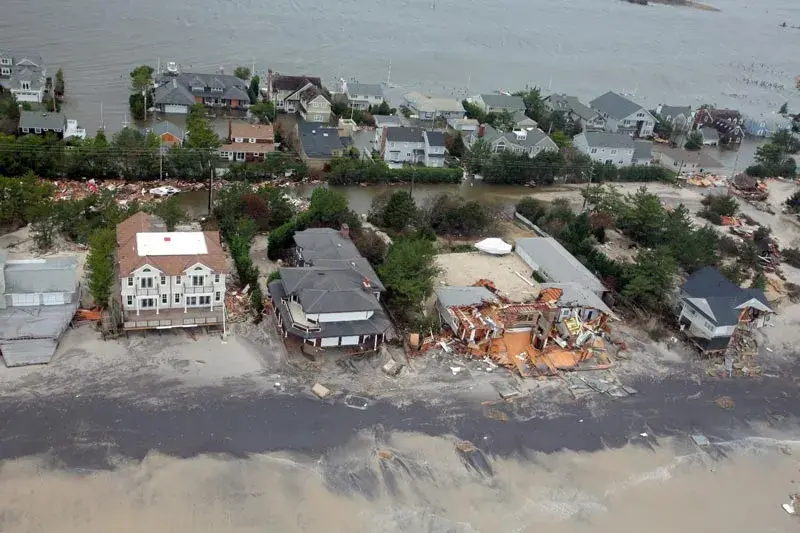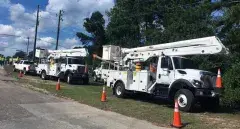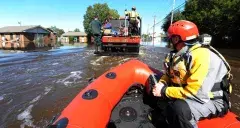 The United States will never be completely impervious to present and emerging threats and hazards across the homeland security mission space. Preparedness is a shared responsibility across federal, state, local, tribal, and territorial governments; the private sector; non-governmental organizations; and the American people.
The United States will never be completely impervious to present and emerging threats and hazards across the homeland security mission space. Preparedness is a shared responsibility across federal, state, local, tribal, and territorial governments; the private sector; non-governmental organizations; and the American people.
Some incidents will surpass the capabilities of communities, so the Federal Government must remain capable of responding to natural disasters, physical and cyber attacks, weapons of mass destruction attacks, critical infrastructure disruptions, and search and rescue distress signals. Following disasters, the Federal Government must be prepared to support local communities with long-term recovery assistance. The United States can effectively manage emergencies and mitigate the harm to American communities by thoroughly preparing local communities, rapidly responding during crises, and supporting recovery.
The Department of Homeland Security's preparedness and resilience responsibilities focus on four goals:

The United States must strive for a future where disasters cause fewer disruptions and less destruction throughout our communities. The prevalence of disaster declarations and recovery costs over the last decade demonstrate the need for local communities to improve their preparedness for predictable natural events. Building more resilient communities and investing in mitigation measures are the best ways to reduce risks to local communities arising from the loss of life, economic disruption, and infrastructure restoration.
DHS is supporting communities to encourage self-sufficiency long before disasters arise by emphasizing pre-disaster mitigation efforts that strengthen infrastructure and reinforce existing structure, which can save lives and exponentially decrease post-disaster recovery costs. Additionally, DHS will enable communities impacted by natural disasters to rebuild better, stronger, and more resilient infrastructure to protect taxpayer investments and adequately prepare for future disasters.
Related DHS Components

Natural and man-made disasters and emergencies can overwhelm even the best prepared governments, causing a high number of fatalities, widespread destruction, and economic and social damage. Communities impacted by incidents require guidance, tools, equipment, and resources to deliver necessary aid and relief to Americans in their time of need. Working with stakeholders across the country, DHS supports and promotes the ability of emergency response providers and relevant government officials to communicate in the event of natural disasters, acts of terrorism, and other hazards.
DHS responds to incidents by engaging directly with community leadership to provide support; coordinating federal response and recovery efforts; and providing critical resources such as the DHS Surge Capacity Force, search and rescue assets, communication systems, technical assistance, and other incident response functions. This coordinated approach to emergency response enables DHS to apply its full scope of authority and operational capabilities to support impacted communities. For instance, DHS works with stakeholders across all levels of government to maintain interoperable communication systems that support response and recovery efforts. In the case of biological and chemical incidents, DHS works to identify, monitor, and assess emerging threats to recognize outbreaks and control the spread of health incidents. Where cyber incidents require a national response, DHS limits the immediate consequences and prevents the incident from spreading to other victims. These response capabilities ensure that communities across the United States are resilient against all threats and hazards.
Related DHS Components

Beyond the immediate response in the aftermath of catastrophic incidents, communities often require long-term national assistance to fully restore infrastructure, economic activity, social services, housing needs, and other critical government functions. DHS is streamlining and integrating existing disaster assistance processes to reduce the complexity of survivor support programs. Additionally, DHS is working with all levels of government to design outcome-driven recovery that enables communities to have greater control over their own recovery. To complement these initiatives, DHS is maturing the National Disaster Recovery Framework to help communities rebuild stronger, reduce future risk, and decrease disaster costs.
Related DHS Components

Most effective strategies for emergency management are federally supported and executed by the immediate authority of a jurisdiction. As disasters unfold, individuals and local government serve as the first responders to triage the incident and stabilize the situation. DHS promotes community-building initiatives to improve the strength of local networks and reinforce practical skills of first responders until further relief takes effect, such as a basic first aid, home maintenance, and emergency planning methods.
